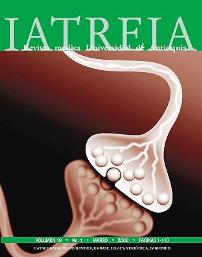Urban physiology: physicians and engineers in Medellin, one century ago
DOI:
https://doi.org/10.17533/udea.iatreia.4265Keywords:
Architecture, Hygiene, Medical doctors, UrbanismAbstract
This paper explores the role accomplished by medical doctors in the regulation, management and planning of the city of Medellín between the XIX and XX centuries. Hygiene as a knowledge, imported by medical doctors from Europe, was applied and used as progress and development parameter for both the society and the city. From different theoretical perspectives, medical knowledge and practice had a vital impact on the definition of hygiene as a private and public matter. It is important to emphasize the approach that medical doctors, as individuals or as members of a social organization, shared their observations, diagnoses and strategies on public health problems not only in conferences and papers but also in tangible actions which are reflected in the architecture and urbanism of the city. In this manner, medical doctors influenced public policies to regulate and help in the architectonic development even before engineers and architects; in that sense they were the pioneers of the “city planning”.
Downloads
Downloads
Published
How to Cite
Issue
Section
License
Papers published in the journal are available for use under the Creative Commons license, specifically Attribution-NonCommercial-ShareAlike 4.0 International.
The papers must be unpublished and sent exclusively to the Journal Iatreia; the author uploading the contribution is required to submit two fully completed formats: article submission and authorship responsibility.














